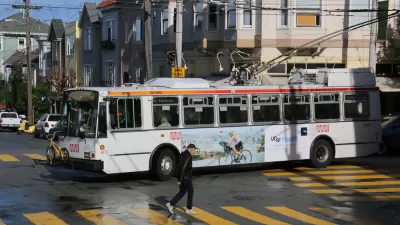Architecture is certainly headed for its own version of the Big Bang. A density of firms are simmering with scarce backlog, delinquent collections, looming layoffs, high overhead, low morale as weakened management relies on a foggy stimulus package to forestall an explosion of great magnitude. After the inevitable, our profession will reconstitute based on a new chemistry.
Architecture is certainly headed for its own version of the Big Bang. A density of firms are simmering with scarce backlog, delinquent collections, looming layoffs, high overhead, low morale as weakened management relies on a foggy stimulus package to forestall an explosion of great magnitude. After the inevitable, our profession will reconstitute based on a new chemistry. Here are 15 predictions of what to expect:
The Nucleus (Mega A&E Firms)
-
A dozen global engineering conglomerates (Nuclei) seize the opportunity to cherry pick and buy the remnants of large and mid-size architecture, planning, transportation, landscape, economic, graphic design, reproduction, operations and construction businesses. Depending on the ambitious nature of the venture, source building materials, nurseries and even financing companies could be included in the mix. Thousands, upon thousands of technical and management personnel become aligned under the Nuclei.
-
Because of their sheer size, each Nucleus will initially require multi billion dollar infrastructure contracts to stay solvent. Smaller projects will be turned away because certain financial thresholds set by their accounting departments will require a minimum amount to even process a contract.
- Eventually, the Nuclei will realize the gap and create efficient and affordable smaller delivery models to handle projects of varying scale.
- The remaining large and mid sized firms not acquired by the Nuclei will eventually collapse laying off several generations of specialized design professionals to fend for themselves.
The Electrons (Untethered Design Professionals)
-
A new breed will emerge. Nimble, creative design entrepreneurs (Electrons) that are efficient, speedy, innovative, tenacious, extremely flexible with stellar project experience in urban design, sports, entertainment, transit, education, medical, judicial, retail, office, hospitality, marine, residential, seniors, new communities - you name it.
-
As the economy improves and the Electrons reflect on their employers' mistakes and decide that they are not ready to repatriate traditional offices. Instead, newly developed survival skills allow them to keep one foot out the door. Their motives are partially to protect themselves, to continue testing their individuality, to strengthen networks with trusted peers, to form ad hoc project teams and to take promising, calculated risks that lead to breakthroughs in design.
-
The costs of licensure, the fear of professional liability and access to affordable health insurance are overcome by the Electrons as they establish their own identities.
-
Technology optimization via the internet, cloud computing, wi-fi, VoIP and skype allow affordable connectivity throughout the world. New software applications on small, high power laptops send data from porches, kitchen tables and remote locations - similar to the early days of video game development.
-
Design solutions are unleashed from a plethora of non-traditional places. Neighborhood home offices, hot desking, touchdown spaces and landing pads replace commuting for the most sought after.
Atom Power
-
Cooperation, rather than competition, becomes the rule. Imitating nature, each Nucleus surrounds and aligns with its favorite Electrons that energize a symbiotic relationship strengthening the whole design process. New planning strategies and building technologies emerge that help build the communities we have longed for.
-
Electrons are praised for new work styles that increase creativity, efficiency and affordability, while the Nuclei are relied upon for stability.
The Cosmos (Scattered Clients & Government)
-
Private developers, real estate executives, commercial project managers have resettled and become more humble. Relationships become equal and rekindle from a more meaningful starting point. Past mistakes are acknowledged and forgiven. There is no upper hand based simply on money. That's a good thing.
-
Government clients enter the picture for the first time and are enamored. They need greater time to understand the creative process as they go through the design design stage probably for the first time. They are really interested and eager to participate. The planning disciplines will gain power.
-
Have empathy for their elected position and their constituents. Get out in front of them a bit to make their life easier. Set a high bar by making Government better as a result of our participation.
-
Since public funds are involved, eliminate wastefulness. Design with simplicity, clarity and with public welfare in mind.
It appears that Architecture's Big Bang is more reality than theory. It will be studied in real time. Instead of accepting this uncertain fate, the profession emerges with new motivation, new leadership and a smarter design approach to make life better on Planet Earth.

Montreal Mall to Become 6,000 Housing Units
Place Versailles will be transformed into a mixed-use complex over the next 25 years.

Planetizen Federal Action Tracker
A weekly monitor of how Trump’s orders and actions are impacting planners and planning in America.

DARTSpace Platform Streamlines Dallas TOD Application Process
The Dallas transit agency hopes a shorter permitting timeline will boost transit-oriented development around rail stations.

Interactive Map Reveals America's “Shade Deserts”
Launched by UCLA and American Forests to combat heat-related deaths, the tool maps the shade infrastructure for over 360 U.S. cities.

Bicycles and Books — In Sacramento, Libraries Now Offer Both
Adult library card holders can check out e-bikes and e-trikes for up to one week.

Colorado Landfills Emit as Much Pollution as 1M Cars
Landfills are the third-largest source of methane pollution in Colorado, after agriculture and fossil fuel extraction.
Urban Design for Planners 1: Software Tools
This six-course series explores essential urban design concepts using open source software and equips planners with the tools they need to participate fully in the urban design process.
Planning for Universal Design
Learn the tools for implementing Universal Design in planning regulations.
City of Mt Shasta
City of Camden Redevelopment Agency
City of Astoria
Transportation Research & Education Center (TREC) at Portland State University
US High Speed Rail Association
City of Camden Redevelopment Agency
Municipality of Princeton (NJ)





























